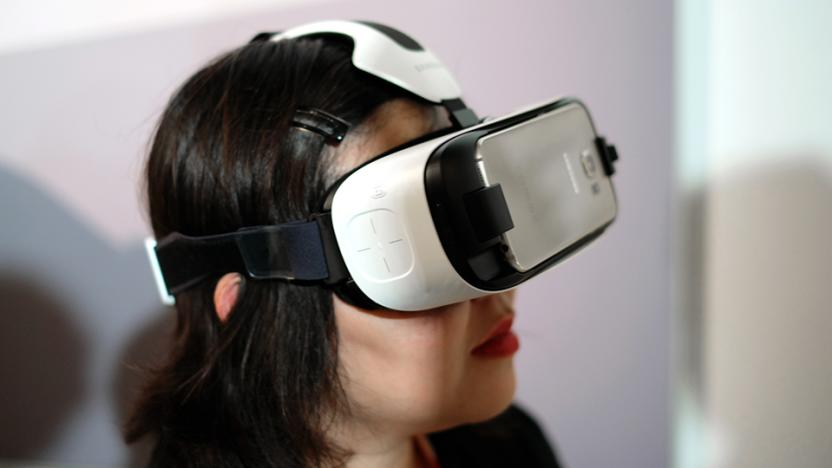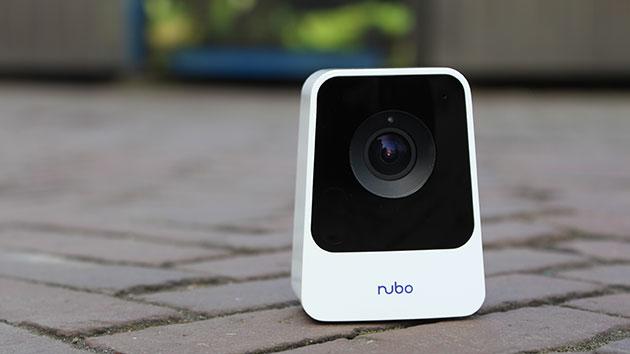MWC2015
Latest

Daily Roundup: MWC 2015 so far, Google+ splits up and more!
Mobile World Congress kicks off in Barcelona today and there's already been a number of big announcements. Get the latest details about the new phones from Samsung, HTC and Lenovo. In other news, Google+ is splitting up and IKEA will sell wireless charging furniture. Head past the break to find out the top stories from MWC and more.

Huawei's MediaPad X2 is a phone with a 7-inch display
While its first Android Wear smartwatch might be grabbing the headlines, Huawei also has a new phablet on display at MWC this year. The MediaPad X2 is the sequel to last year's X1, which, depending on how you look at it, was either a small tablet or an enormous phone. There's not a lot new to look at here -- aesthetically it's very similar to the X1 -- but internally there are a few changes.

PayPal's new Here card reader can handle NFC payments
PayPal is no stranger to mobile payment solutions, but at Mobile World Congress, the company is making a useful upgrade to its Here card reader. In addition to being able to handle payments from those chip-and-PIN credit/debit cards, the new version of PayPal's transaction tech will also support NFC. This means that not only will the latest version of Here wrangle touchless payments from the aforementioned cards, but it'll also allow retailers to accept funds from mobile devices. It's said to work just like terminals in retail stores, except this add-on connects with a separate mobile device to power the whole thing. That's good news for the PayPal faithful as Apple Pay, Samsung Pay and Android Pay all leverage NFC to transfer funds. There's no word on pricing just yet, but the new version of Here will hit the UK and Australia this summer, with a US debut slated for later this year. Don't miss out on all the latest news, photos and liveblogs from MWC 2015. Follow along at our events page.

The biggest announcements of MWC 2015 so far (part 1)
MWC technically starts today, but that didn't stop some of the industry's biggest players from trying to get a head start on the fun on Sunday. Besides the big launches, there were a couple of pre-show events for those offbeat things that didn't need an auditorium to themselves. This means the preceding Sunday is actually one of the busiest days for big announcements. Here's the pick of the bunch this year, just head to the gallery below.

Relive Samsung's Galaxy S6 event right here
Did you sleep in on Sunday, only to realize that you'd missed Samsung's big Galaxy Unpacked event? Relax -- you can still watch the show as if it were fresh. As is its custom, the Korean tech giant has helpfully posted both a replay of the full event and a quick recap. The focus of the presentation is no longer all that surprising (spoiler: It was about the Galaxy S6 and S6 edge), but it's worth checking out if you want to see Samsung explore every nook and cranny of its latest smartphones.

We dig this slim smartphone from China, but it won't be cheap
This wouldn't be the first time that Gionee's released a slim, 5.5mm-thick phone. Following the aptly named Elife S5.5, the Chinese company is back with an LTE refresh model that's confusingly dubbed the Elife S7, which manages to retain the same slimness (read: not 7mm thick), the standard headphone jack and a lighter weight of just 126.5g, while packing some nice upgrades. First of all, you get a slightly bigger 5.2-inch 1080p AMOLED screen, along with a similar 1.7GHz octa-core MediaTek chipset with 2GB of RAM, but enhanced with 64-bit computing, multi-mode LTE radio and dual micro-SIM slots. And yes, the phone runs on Android Lollipop with Gionee's customized UI. There's also a more generous 2,750mAh battery -- a notable jump from the S5.5's 2,300mAh cell that had us frustrated.

Jolla Tablet shows us what Sailfish OS is capable of
When Jolla's first smartphone debuted with Sailfish OS, it didn't leave a great impression with some of our staff. The gesture-heavy UI was confusing to newcomers and offered few advantages over rival mobile platforms. Aside from just being different, of course. Since then, however, Jolla has been quietly improving Sailfish OS to ensure it makes a splash with its first tablet. That's right: We're talking about the slate that blasted through its $380,000 crowdfunding target on Indiegogo last November. We've been hands-on with a not-quite-final build at Mobile World Congress and the impact of "Sailfish OS 2.0" is immediate. The hardware is solid, but it's the simplified navigation that stands out the most.

Panasonic takes on Dropcam with a 4G-equipped monitoring camera
WiFi monitoring cameras, like Dropcam, are great for keeping tabs while you're away. But what if there were devices that didn't require that connection, or to be plugged in all the time? Meet Panasonic's Nubo: a 4G-equipped security camera that can still keep a watchful eye on situations where there's no power or WiFi signal. The camera's motion sensor detects movement, recording clips in five-, 10-, 30- or 60-second lengths and analyzes the footage to differentiate between humans and your family pets. If your dog or an unwanted guest enters the monitored area, Nubo sends alert to your connected mobile device along with the captured video. What's more, the camera has a built-in speaker and microphone, allowing two-way communication should the need arise. It can be connected to an external USB battery too, so even if there's a loss of power, Nubo is still hard at work.

Intel's new Atom chips cover cheap phones to premium tablets
Intel's been slow to transform itself for the new mobile world, but with its latest family of Atom chips, it may finally be able to go toe to toe with Qualcomm. The chip giant announced the Atom X3, X5 and X7 processors at Mobile World Congress today, giving it an arsenal that can fit into both budget and high-end devices (and everything in between). Specifically, Intel's targeting the new X3 chip at devices under $75, while the X5 and X7 are aimed at gadgets priced at $119 or more. The X3 also marks the first time it's been able to integrate a modem into a system-on-a-chip (it's available in both 3G and LTE variants). While Intel's still struggling to become a player among Android devices, these new chips offer something that Qualcomm doesn't: full Windows support. They put Intel in a prime spot to cash in as device makers start designing their Windows 10 wares (which will include everything from phones to high-end desktops).

The Big Picture: HTC's Vive VR headset up close and personal
This is what HTC's Vive VR headset looks like in real life. It's not a dummy model; those sensors are fully functional. It's on my actual head. The first thing you may notice (if you don't, check the gallery below), is that it looks a little bigger than the Oculus Rift. Or at least, thanks to the height of the sensor-housing faceplate, it feels that way. Those sensors are also exposed, a bit like they were on Oculus' Crystal Cove prototype at CES 2014. Take a look around the headset from different angles, and you'll see that HTC may not have deviated from the current virtual reality design script too far, but at the same time, it doesn't feel entirely derivative. Can this thing blow our minds like we hope it will? Is the VR race now officially on (given, you know who's newest headset has just debuted too)? We'll let you know once HTC finally pours its Valve-powered VR content into our eyes later this week.

Google's new mobile payment platform is called Android Pay
It's shaping up to be a big year for mobile payments, what with Apple Pay enjoying rapid adoption and Samsung finally getting in the game too. Google also has a presence, but it's only very recently decided to ramp up its efforts in this space. Last week, we saw the company team up with AT&T, Verizon and T-Mobile to preload its Wallet mobile payment app on new Android phones, and now it's creating a new framework to power payments across its OS.

Google balloons and drones bring global wireless closer to reality
Google's aerial ambitions continue unabated. Need proof? Just talk to Sundar Pichai -- just before he sat down for a Q&A with Bloomberg's Brad Stone at MWC, the Google SVP confirmed the company's internet-beaming Titan drones would take their flight in the coming months, and that its Project Loon balloons now stay afloat for "six months at a time." The last time Google decided to speak publicly about its fleet of internet-beaming Project Loon balloons, they could languidly hang in the atmosphere for about 100 days. That's not a bad stretch considering these things can now deliver LTE data speeds to devices on the ground, but Google's got these things running even better than before.

Google confirms it'll launch the 'Nexus' of virtual phone networks
Google has just confirmed a rumor at Mobile World Congress that many thought unlikely: It'll launch its own "white label" MVNO cell network. That means it'll carry or resell wireless services from larger operators in one way or another, not unlike, say, Boost Mobile. However, Android head Sundar Pichai stressed that the service wouldn't operate on a large scale or compete head to head against carriers like AT&T or Verizon. Instead, he likened it to Google's Nexus devices, calling it a way to drive new technology in order to make cellular and WiFi services work together in a "seamless" fashion.

Wacom finally outfits its Cintiq 13HD pen display with touch gestures
Wacom has a habit of trotting out non-touch versions of its stylus-friendly tech first. The Cintiq 13HD arrived back in 2013, and one of my main gripes with the device was its lack of support for your fingertips. Well, the company finally announced the touch-enabled version today, nearly two years after the original's debut. And yes, it still packs in a Pro Pen with 2,048 levels of pressure sensitivity. The adjustable stand is included too, and the customizable ExpressKeys and a Rocker Ring will wrangle your go-to tools quickly. In fact, as far as I can tell, the only difference between this and the previous version is the added touch compatibility. There's no denying Wacom's pen tablets and displays are way more useful when you can get your fingers more involved, I only wish it'd give us the choice from the start. Surely those who've already invested are going to be a bit upset -- and rightfully so. If you held out, though, the Cintiq 13HD can be yours this month for $999. Don't miss out on all the latest news, photos and liveblogs from MWC 2015. Follow along at our events page.

Ford's foldable e-bike pedals itself when your heart rate goes up
At CES in January, Ford outed its "Smart Mobility Plan" to make transport easier using a combination of cars and electric bikes. Today at MWC, it just revealed the bike part of that with its "Handle on Mobility" experiment consisting of two employee-designed e-bike prototypes and an app. The foldable MoDe:Me for commuters was made in conjunction with specialist Dahon, while the bigger MoDe:Pro -- aimed at bike couriers and delivery services -- was built in-house. Both come with 200-watt motors and 9-amp-hour batteries that deliver pedal-aided speeds of up to 25 km/h (16MPH). Ford also revealed its iPhone 6-compatible MoDe:Link app that lets you use a combination of cars, trains and e-bikes to commute.

Jolla takes on Android with a promise not to sell your data
When Jolla launched its tablet on Indiegogo, it was an instant success. Today that tablet is being shown to the media for the first time at MWC. But, that's not all that the plucky mobile startup has to reveal. With the new tablet comes the second version of Jolla's Sailfish OS. Version 2.0 brings not only some features you'd expect (like easy scaling between phones and tablets -- to accommodate its new hardware), but also some new, bigger-picture additions like support for Intel's Atom x3 chipset, a new push into licensing with OEM hardware and a couple of direct swipes at Android, and how it gathers your data.

Blackphone launches a new phone, tablet and privacy platform
Silent Circle, the outfit behind the security-oriented Blackphone, has just revealed two new handsets and "the world's first enterprise privacy platform." The first Blackphone was unveiled last year for (understandably) paranoid entrepreneurs. It was a response to revelations of mass data collection, and the latest devices build on that. Last year's phone was made by Spanish outfit GeeksPhone, but since then, Silent Circle has wrestled control of the brand, and this is its first homemade device. The Blackphone 2 carries similar privacy features, but actually gives you a better phone, with an octa-core CPU, 3GB of RAM, 32GB of storage, a bigger battery and a 5.5-inch 1080p display. Meanwhile, the Blackphone+ (briefly mentioned by Silent Circle's co-founder earlier) is a privacy-focused tablet coming later in 2015. So far, there are no exact specs on the tablet (it's not ready for prime time), and there's no price on either device. Both are slated to arrive in the second half of this year, though.

Google+ is being broken into services you might want to use
It's been the punchline to plenty of gags, and now it looks as if Google is finally ready to do something with its homegrown social network. The search engine has announced that the photography and social elements of Google+ are being broken into two separate products, one called Photos and the other named Streams. In a post on Google+, company VP (and Radiohead fan) Bradley Horowitz announced that he was taking charge of the outfit, adding that the move is a positive improvement to both products.

Qualcomm's next chips will help smartphones think for themselves
Qualcomm teased the prospect of smartphones that learn a couple of years ago, and it's now much closer to making them a practical reality. The chip designer has revealed its next big mobile processor, the Snapdragon 820, will be one of the first that can handle its Zeroth cognitive computing platform. In short, it'll let your phone learn about you (and the world around you) to take action on its own. You should see photo apps that detect whole scenes, security tools that protect against unknown viruses and interfaces that depend more on expressions and head movement than button taps. It gets more ambitious than that, though. Zeroth allows for always-on sensors that detect your surroundings (such as through motion or sound) and help your phone anticipate what you want.

Microsoft's Lumia 640 and 640 XL are its new budget phone stars
After mistakenly letting the cat out of the bag yesterday, Microsoft has officially unveiled its latest Lumia phones at Mobile World Congress -- and they're pretty tempting if you're looking for a good deal. The new Lumia 640 and 640 XL (can you guess the difference?) are the company's latest budget phones, effectively replacing last year's Lumia 630 and 635. They both include a quad-core Snapdragon processor running at 1.2GHz, a gigabyte of RAM and 720p display resolutions, but they differ in screen size and camera prowess. The Lumia 640 has a 5-inch screen and an 8-megapixel shooter, while the XL -- Microsoft's first budget phablet -- packs in a 5.7-inch screen and a 13MP camera with a Zeiss lens. That's a significant bump from the weak 5MP option in last year's phones, but without a big price increase: The 640, expected in May, will start unlocked at around $155 for its 3G version and $177 for the LTE model. And if you want to get your hands on the XL soon, you're in luck. It's coming later this month for around $211 (3G) and $244 (LTE). As usual, final pricing is up to the retailers.











